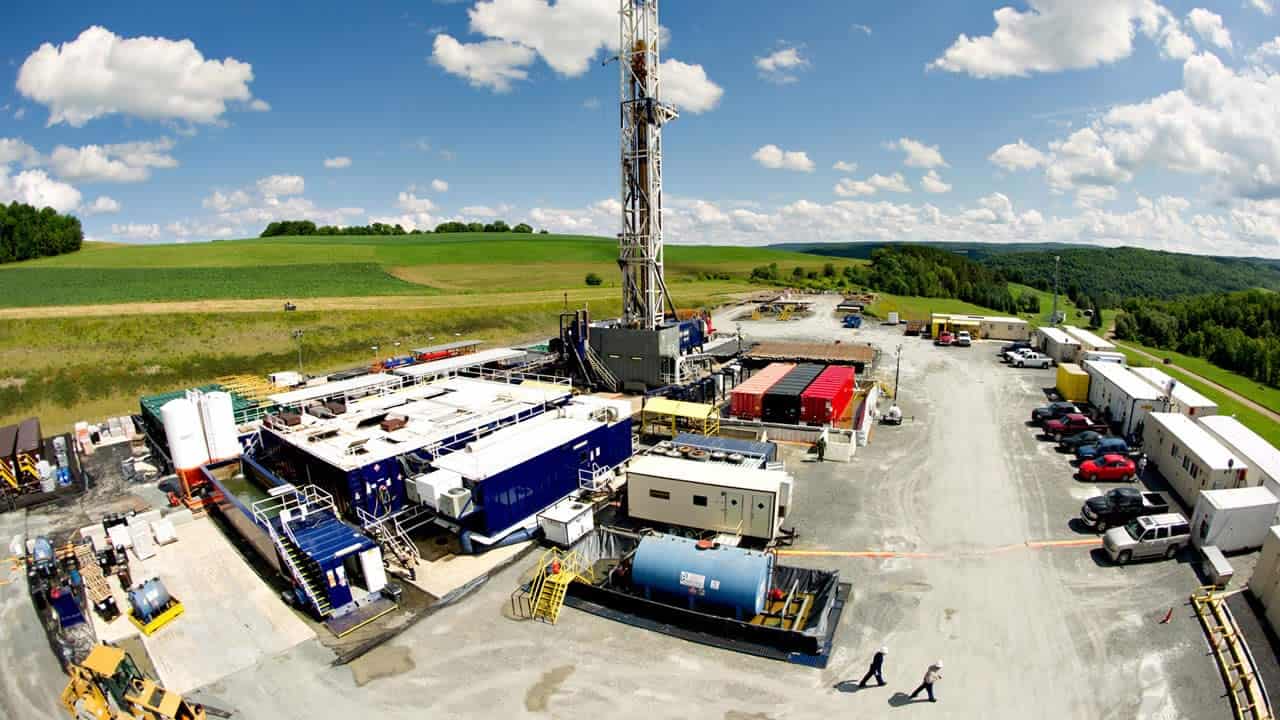Let’s take a brief look at what you can expect to learn in our Petroleum Engineering & Technology Course.
Petroleum Engineering and Technology Course Content Overview
- Anatomy of a Drill Site
- The Drilling Process in Detail
- Potential Problems While Drilling
- Formation Evaluation
- Stimulation
- Production
- Problems Encountered During Production
- Decommissioning & Reclamation
The foundation of comprehensive petroleum literacy is a clear understanding of current industry operational principles and practices, such as those that occur in the drilling process. The Anatomy of a Drill Site lesson gets you off to a good start on a basic overview of the set-up and rigging up at a drill site. Plus, you will have access to our drilling interactive module: a rich resource through this course. We will also look at the main systems of a drilling rig: power system, hoisting system, rotation system and circulation system. Once we get the systems set up, we’ll take a look at some of the planning that goes into selecting the proper drilling mud and casing to safely drill and isolate a well.
After explored drilling systems, pressure containment, and the considerations that go into developing a drilling plan, the Drilling Process in Detail lesson focuses in on several processes that are repeated over and over during the drilling phase of operations: these include drilling rock, adding pipe, tripping out, tripping in, cementing casing, and running wireline tools.
Despite all the precautions taken by modern drillers, there are things that can go wrong. In the lesson on Potential Problems While Drilling, we’ll look at several potential problems that can be encountered during drilling, and ways to avoid them.
The lesson on Formation Evaluation explains how engineers and geologists quantify the production potential of a well using remote sensing methods. The ultimate goal of formation evaluation is to decide whether it is worthwhile to complete a well, and, if so, how the well should be completed. Logging and coring, discussed in this lesson, are two of the main formation evaluation techniques used in the oil and gas industry.
Our Stimulation lesson explains the process of modifying the flow conditions or reservoir properties so that a well produces more than it would naturally. Generally, stimulation includes processes to open up pathways around the wellbore to increase hydrocarbon fluid flow. These pathways may have been “damaged” by the act of drilling through the reservoir rock which can damage the walls of the bore hole and seal them with mud cake, or mud may invade into the formation, reducing permeability to a degree that requires some kind of intervention, such as acidizing, to make the well economically viable. In some reservoirs, the permeability is so low that a well won’t produce unless a stimulation technique such as hydraulic fracturing is used. This lesson also walks you through the process of hydraulic fracturing, a common method of stimulating a well.
Once a well has been drilled and completed, operations move into the production phase. The Production lesson explores the moment operators have been working towards – the moment when oil and gas begins to move out of the well and through the meters that measure the total volume sold. In this lesson we’ll cover the planning and implementation of production operations at both oil and gas wells. A very handy Production Equipment Interactive is part of the lesson.
In the Problems Encountered During Production lesson we’ll spend a little time talking about safety and environmental issues that sometimes come up during production. Risks of explosion, releases of poisonous gases, and potential groundwater contamination are just some of the things that must be guarded against to keep personnel and the environment safe.
In our lesson on Decommissioning & Reclamation we’ll discuss how every well, no matter how successful, eventually reaches the point where it can no longer produce oil or gas economically. After the stages of production are complete, as much as 50% or more of the original hydrocarbons remain in the reservoir. But these hydrocarbons are increasingly expensive to extract. Once the cost of extraction exceeds the value of the resource, it’s no longer worth producing and the well must be decommissioned and the site reclaimed.
The Petroleum Engineering & Technology course provides you with a fundamental understanding of what typically happens once the site is selected and drilling commences. The curriculum takes you through formation evaluation, completions and stimulation, and closes with decommissioning and site reclamation. A self-check at the end of each lesson provides the opportunity to refresh and cement your knowledge so that you are ready for the next lesson.
Contact us today to learn more about our courses or check out our FAQ page for answers to our most commonly asked questions. Sign up for your next online training course with TOP Energy Training today!


